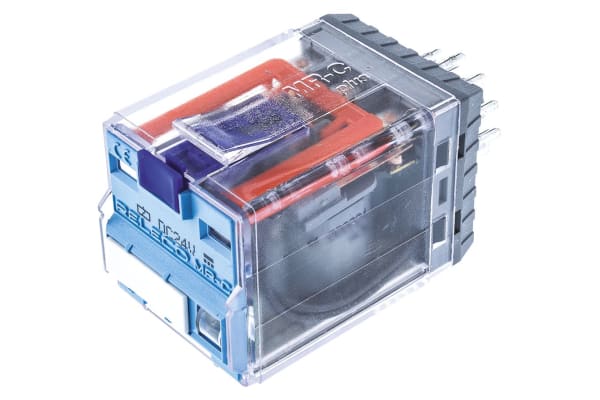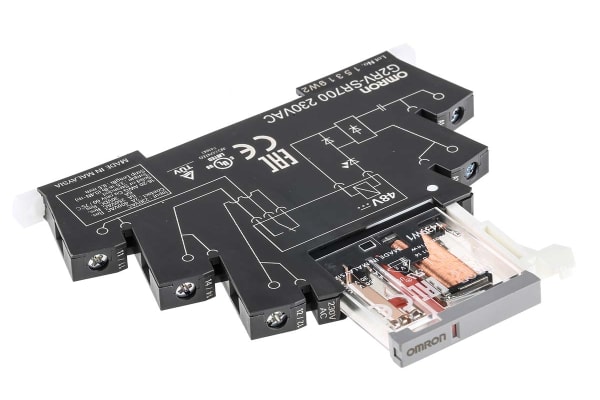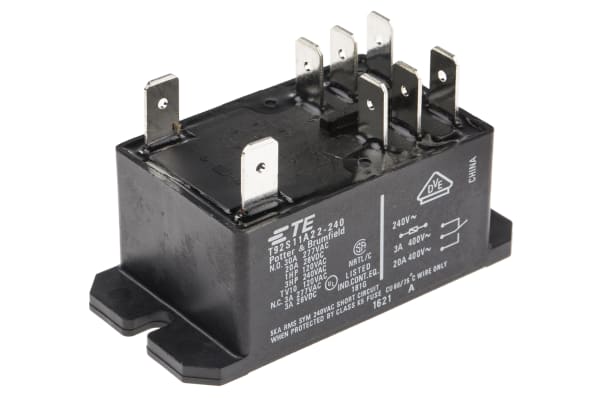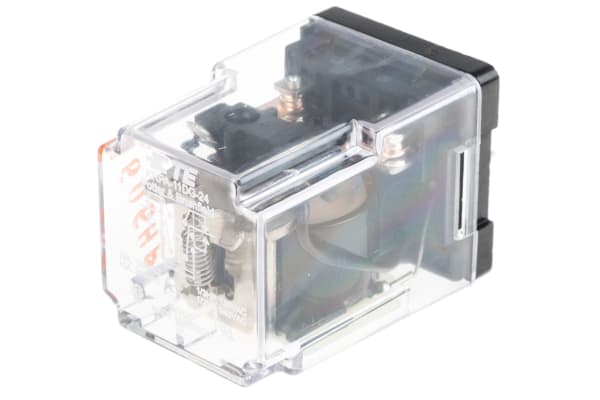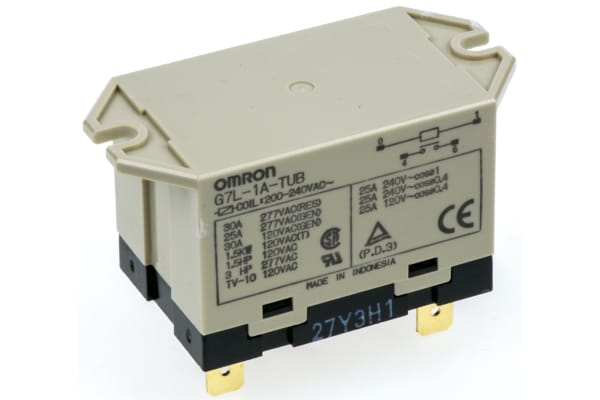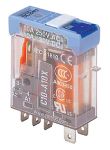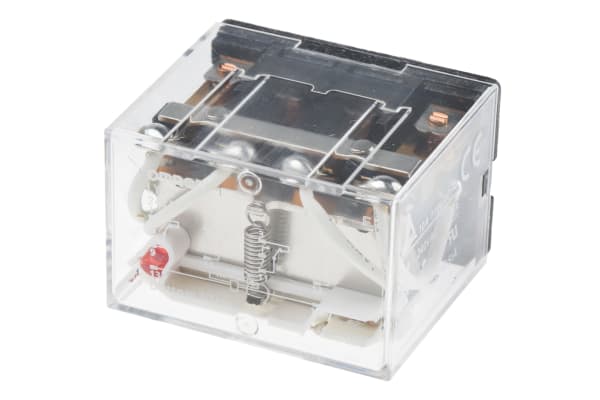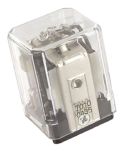Non-Latching Relays
Relays are electrical switches that are operated by electrical impulses with the primary function to open and close a circuit, they can also be referred to as industrial switches. There are 2 main types available, latching and non–latching relays.How do non-latching relays work?Non-latching relays are in a normally closed (NC) position and will stay in this state without power. When power passes through the circuit, the relay switched to a normally open (NO) position by using an internal coil to generate a magnetic force, holding this NO position. Once the current is turned off, it returns to the NC position. This makes non-latching relays well suited to push-button applications like keyboards and micro-controller input buttons.What are non-latching relays used for?Non-latching relays are highly durable and versatile components, making their performance long lasting and suitable for use in a wide range of applications, such as:Automotive enginesHousehold appliancesIndustrial machineryMedical equipmentTelecommunications equipmentWhat is the difference between latching and non-latching relays?Both types of relays in similar in design and function, however, a significant difference between them is that a latching relay will remain in the last position it when it was last powered, whereas a non-latching goes back to its normal position. This makes each more type of relay suitable for different applications. Considerations when selecting a relayWhen choosing a relay, it is important to consider a number of specifications to ensure it is fit for purpose, some factors include:Coil voltage – the required voltage to actuate the switching mechanism. If a voltage is too high this could damage the components, if it is too low then it will not actuate. Contact configuration – This is the state the contacts are in without power. For example SPST, single pole single throw.Contact material – the relay contacts are available in many materials that have certain properties. Common materials are gold, silver, tin oxide and nickel Coil power – the amount of power (watts) the coil operates at. This must match the power in the circuit for correct function. Coil resistance – the amount of resistance (ohms) in the circuit that the coil creates.
-
Releco, 24V dc Coil Non-Latching Relay 3PDT, 10A Switching Current Plug In, 3 Pole, C3-A30X / DC 24 V
IDR414,315.50 -
Omron, 24V ac/dc Coil Non-Latching Relay SPDT, 50mA Switching Current DIN Rail Single Pole, G2RV-SR700-AP AC/DC24
IDR239,149.20 -
Panasonic, 12V dc Coil Non-Latching Relay DPDT, 16.7mA Switching Current PCB Mount, 2 Pole, S2-DC12V
IDR193,941.61 -
Releco, 115V ac Coil Non-Latching Relay 3PDT, 10A Switching Current Plug In, 3 Pole, C3-A30X / AC 115 V
IDR384,736.52 -
Omron, 230V ac Coil Non-Latching Relay SPDT, 6A Switching Current DIN Rail Single Pole, G2RV-SR700 AC230
IDR301,348.97 -
TE Connectivity, 230V ac Coil Non-Latching Relay DPDT, 30A Switching Current Panel Mount, 2 Pole, T92S11A22-240
IDR396,484.20 -
Wago, 24V dc Coil Non-Latching Relay, 19.1mA Switching Current DIN Rail, 2 Pole, 788-312
IDR406,553.64 -
Releco, 230V ac Coil Non-Latching Relay 4PDT, 5A Switching Current Plug In, 4 Pole, C9-A41X / AC 230 V
IDR437,391.30 -
Releco, 230V ac Coil Non-Latching Relay 3PDT Plug In, 3 Pole, C3-A30X-230VAC
IDR409,700.34 -
TE Connectivity, 24V Coil Non-Latching Relay DPDT, 10A Switching Current Plug In, 2 Pole, KRPA-11DG-24
IDR387,883.22 -
Finder, 230V ac Coil Non-Latching Relay 3PDT, 16A Switching Current Plug In, 3 Pole, 62.33.8.230.0040
IDR305,229.90 -
Panasonic DPDT Non-Latching Relay PCB Mount, 12V dc Coil, 15 A
IDR409,595.45 -
Turck, 24V dc Coil Non-Latching Relay SPDT, 10A Switching Current Plug In Single Pole, C10-A10X/024VDC
IDR396,484.20 -
Omron, 120V ac Coil Non-Latching Relay SPNO, 30A Switching Current Panel Mount Single Pole, G7L-1A-TUB 100/120AC
IDR376,869.77 -
Turck, 5V dc Coil Non-Latching Relay SPDT, 10A Switching Current Plug In Single Pole, C10-A10X/005VDC
IDR423,231.15 -
Omron, 24V ac/dc Coil Non-Latching Relay SPDT, 6A Switching Current DIN Rail Single Pole, G2RV-SR501 AC/DC24
IDR419,035.55 -
TE Connectivity, 24V dc Coil Non-Latching Relay SPDT, 5A Switching Current PCB Mount Single Pole, V23057-B0006-A101
IDR435,922.84 -
Omron, 230V ac Coil Non-Latching Relay SPDT, 6A Switching Current DIN Rail Single Pole, G2RV-SR500 AC230
IDR406,343.86 -
Omron, 24V dc Coil Non-Latching Relay 4PDT, 10A Switching Current Plug In, 4 Pole, LY4 24DC
IDR318,970.49 -
Finder, 24V dc Coil Non-Latching Relay 3PDT, 10A Switching Current Plug In, 3 Pole, 60.13.9.024.0040
IDR271,560.21 -
Omron, 24V ac Coil Non-Latching Relay 4PDT, 10A Switching Current Plug In, 4 Pole, LY4N-AC24
IDR479,137.52 -
TE Connectivity, 24V Coil Non-Latching Relay 3PDT, 15A Switching Current Plug In, 3 Pole, KUMP-14D18-24
IDR430,993.01 -
Panasonic, 24V dc Coil Non-Latching Relay 4PST-NO, 8.4mA Switching Current PCB Mount, 4 Pole, S4-DC24V
IDR561,685.95 -
Wago, 24V dc Coil Non-Latching Relay, 10mA Switching Current DIN Rail Single Pole, 857-304
IDR465,816.49



